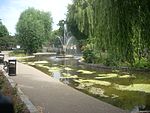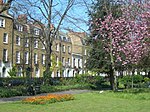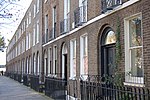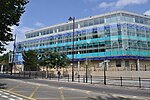Clapton Girls' Academy
1906 establishments in EnglandAcademies in the London Borough of HackneyClapton, LondonEducational institutions established in 1906Girls' schools in London ... and 2 more
Secondary schools in the London Borough of HackneyUse British English from February 2023
Clapton Girls' Academy (formerly Clapton Girls Technology College) is a secondary school with academy status located in Lower Clapton, in the London Borough of Hackney, London, England. The school is situated north of Hackney Central on the A102. It is a few hundred metres west of Homerton University Hospital. It lies in the parish of St James, Clapton.
Excerpt from the Wikipedia article Clapton Girls' Academy (License: CC BY-SA 3.0, Authors).Clapton Girls' Academy
Laura Place, London Clapton (London Borough of Hackney)
Geographical coordinates (GPS) Address Website External links Nearby Places Show on map
Geographical coordinates (GPS)
| Latitude | Longitude |
|---|---|
| N 51.55423 ° | E -0.05197 ° |
Address
Clapton Girls' Academy
Laura Place
E5 0RB London, Clapton (London Borough of Hackney)
England, United Kingdom
Open on Google Maps









